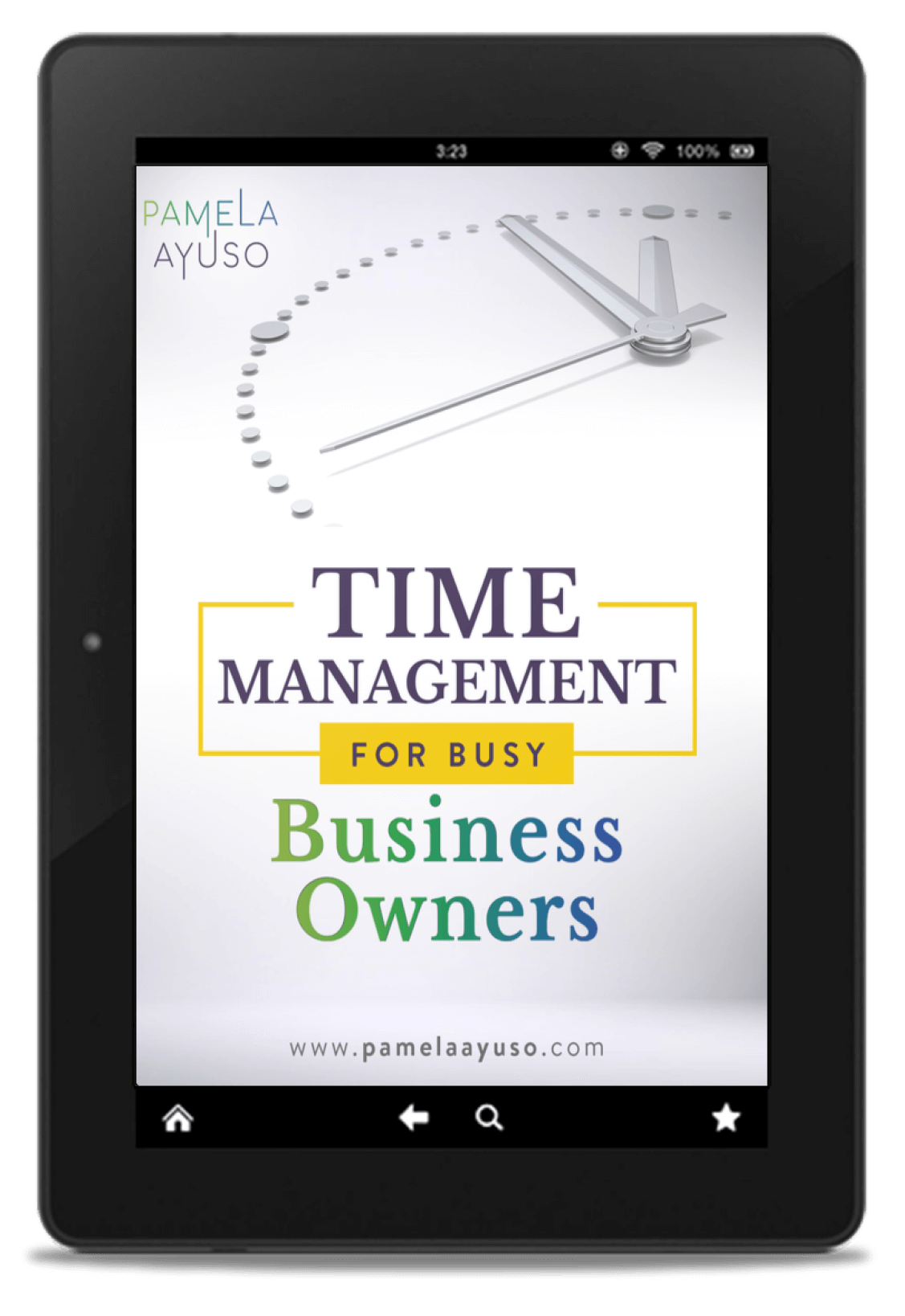It is time to invest in your education and development. There may be a course you have been meaning to take or a conference you have wanted to attend. Do not wait any longer, as you are your most precious asset, and you should invest in yourself fully. You and your growth are all you can truly control after all....
Read MoreWhat i’m writing about

Inspired Thinking: Using Mental Models for a More Innovative Business
In The Great Mental Models Vol. 1 (public library), Shane Parrish and Rhiannon Beaubien give us an introduction to mental models and their applicability to our work and our lives. Mental models are fundamental principles from different disciplines, such as engineering, biology, and physics, which can all work together, interlaced to help us think. The concept has become widely known in part through Charlie Munger, Vice Chairman at Berkshire Hathaway. He uses what he describes as a “latticework of mental models” to improve his thinking and decision-making.

Best Practices for Managing Priorities and Productivity
In his book, The Executive’s Compass: Business and the Good Society (public library), James O’Toole describes the use of a compass with the ideas of liberty (North) and equality (South) on the vertical axis and efficiency (East) and community (West) on the horizontal axis. These poles, notably the liberty-equality continuum, represent tradeoffs we must make as we search for the ideal society. I read about the tension between the idea of full liberty and full equality, but I had never

Implementing Creativity in a Professional Work Structure
We tend to associate creativity with artists and writers and their inspiring sculptures, vibrant paintings, and beautiful poetry. Because of the focus that exists on these brilliant creators, we seldom appreciate the impact that creativity can have on our professional careers. However, creativity is one of our most useful skills, no matter what work we do, whether it is accounting, marketing, or simply managing a department.
Creativity is what permits us to forge our path and our view. Without it, we remain a part of the organizational machine and the existing structure. With creativity, we can alter our environment, make it better, and grow.

6 Ideas to Make Your Processes More Resilient
When a company becomes established, processes are a must. They guarantee consistency and quality, and with time, we rely on them, freeing up space, so we do not have to remember every necessary step of a transaction. As a result, we have more room to think strategically.
Processes capture the state of a company at one point in time, but companies and people are constantly evolving, and processes must do so as well. If processes are not designed to be resilient, they will be too rigid and become either a burden or eventually collapse, losing all the hard work of documentation and implementation.

Writing My First Book and What I’ve Learned
I just finished editing the bulk of my book, and what is left now are only a few final edits and formatting work. I don’t know how I am going to publish it yet (if anybody has any tips, I will be glad to hear them!), but for now, I feel liberated. Writing that book took everything I had.
I always wanted to write a book and I finally decided to write one in 2019. Initially, when I started in January of that year, I set out to write 60,000 words. I borrowed some material from my blog because I have developed many of my ideas there. I also wanted to find academic papers and books to support the views I had and to add many other new ideas.

A Journey into the World of Processes
The importance of having programmed processes in our company became apparent when specific necessary steps weren’t executed. We realized a client statement didn’t go out on time, and we once left out an action when we were closing a sale. I knew then that we needed to manage our workflows with set procedures.
When I began setting up our processes, I tried to do it for every part of the company. This effort turned out to be very successful. We were able to avoid many preventable problems, and we have also been able to operate consistently and with the quality we envisioned. I think this is where processes shine – they help you take care of the vital work that needs to be executed to operate as you envisage.

How I Took Advantage of the Found Time during COVID-19
The novel coronavirus pandemic must be one of the strangest and most challenging experiences any of us have had. We have all had to adapt in the best way possible. I am writing this in September, half a year after the pandemic started for me, and it seems like a good time to evaluate my approach during the pandemic to see what I might learn from it.
I had minor surgery on March 12th, just days before our city shut down. Because it was my first surgery, thoughts of my recovery dominated my mind. Then, when we had to close our office and move to remote work on the following Monday, the surgery was overshadowed by the indefinite work-from-home order. In the span of two days, my life shifted to a fight for the basics of life: education for my girls, figuring out my household in this new environment, and scariest of all, what would happen to our company. That first week was filled with fear and survival-mode action.

Finding Balance When Working and Parenting in the Pandemic: This is Our Story
Being a parent during this pandemic has been quite challenging. In many cases, we have lost our main pillars of child support, such as school, afterschool activities, and childcare. We have had to adapt to find ways to keep working while managing all our other responsibilities. Because we were not prepared, we had to adjust seemingly overnight to a new and difficult reality.
Dropping everything during the first ten weeks to homeschool my three young girls was the biggest challenge I faced as a working mom during the pandemic. I have never been a teacher, and my daughters were not used to having that relationship with me. So, I had to change and learn. On Sunday nights, I would prepare for the following week. Every morning, I developed a routine: I would put on classical music, and we would start our version of ballet dancing all over the room before beginning the classes for the day. Not every day was perfect, but somehow, we got through it by making it fun.

How to Implement New Tools and Achieve the Best Results
Implementing new ideas is not always easy. Sometimes we arrive with the best intentions at a new company and want to introduce many innovations, but we may come face-to-face with entrenched patterns within an organization. Even in organizations that we have led for some time, we might find resistance when we try to institute new practices.
Whether you wish to implement a company intranet, a new business process management system, or the use of objectives and key results in your company, you may face friction. This occurrence is normal, especially if it is not a solution to an existing problem but rather improvement. Having to learn a new tool or information system takes additional time on top of daily procedures.

Finding Focus in a World of Multiple Projects and Distractions
As managers, much of our daily work is problem-solving – going from one issue to the next and resolving each one. We need to approve transactions or discuss with others how to proceed with a question. This type of work requires being able to solve one task at a time and think on our feet. It may also require building consensus and teamwork. It is dynamic work and is full of activity.
There are other times, though, when we need to do a more intense kind of work. Sometimes we must do a deep-dive and research a new topic. We may have to think through an entrenched problem or start and engage with a challenging project that requires concentrated attention. Here, a different type of performance is necessary: one in which we take the time to immerse ourselves in an issue and think through it.

How to Make 2021 a Strong Year from Our Learnings from 2020
I could not let the end of this year pass without writing about a significant transition this new year will represent for so many people. 2020 has been a Pandora’s box in many ways. Personally, in Honduras, we had to deal with the pandemic as well as two hurricanes just ten days apart. We had not had such extreme weather in 22 years, and then we got two storms in two weeks. I think that many of us will be happy to start a new page in 2021, but before we do that, let us take a little bit of time to appreciate what we learned from both the good and the bad in 2020.

Inspired Thinking: Using Mental Models for a More Innovative Business
In The Great Mental Models Vol. 1 (public library), Shane Parrish and Rhiannon Beaubien give us an introduction to mental models and their applicability to our work and our lives. Mental models are fundamental principles from different disciplines, such as engineering, biology, and physics, which can all work together, interlaced to help us think. The concept has become widely known in part through Charlie Munger, Vice Chairman at Berkshire Hathaway. He uses what he describes as a “latticework of mental models” to improve his thinking and decision-making.

Best Practices for Managing Priorities and Productivity
In his book, The Executive’s Compass: Business and the Good Society (public library), James O’Toole describes the use of a compass with the ideas of liberty (North) and equality (South) on the vertical axis and efficiency (East) and community (West) on the horizontal axis. These poles, notably the liberty-equality continuum, represent tradeoffs we must make as we search for the ideal society. I read about the tension between the idea of full liberty and full equality, but I had never

Implementing Creativity in a Professional Work Structure
We tend to associate creativity with artists and writers and their inspiring sculptures, vibrant paintings, and beautiful poetry. Because of the focus that exists on these brilliant creators, we seldom appreciate the impact that creativity can have on our professional careers. However, creativity is one of our most useful skills, no matter what work we do, whether it is accounting, marketing, or simply managing a department.
Creativity is what permits us to forge our path and our view. Without it, we remain a part of the organizational machine and the existing structure. With creativity, we can alter our environment, make it better, and grow.

6 Ideas to Make Your Processes More Resilient
When a company becomes established, processes are a must. They guarantee consistency and quality, and with time, we rely on them, freeing up space, so we do not have to remember every necessary step of a transaction. As a result, we have more room to think strategically.
Processes capture the state of a company at one point in time, but companies and people are constantly evolving, and processes must do so as well. If processes are not designed to be resilient, they will be too rigid and become either a burden or eventually collapse, losing all the hard work of documentation and implementation.

Writing My First Book and What I’ve Learned
I just finished editing the bulk of my book, and what is left now are only a few final edits and formatting work. I don’t know how I am going to publish it yet (if anybody has any tips, I will be glad to hear them!), but for now, I feel liberated. Writing that book took everything I had.
I always wanted to write a book and I finally decided to write one in 2019. Initially, when I started in January of that year, I set out to write 60,000 words. I borrowed some material from my blog because I have developed many of my ideas there. I also wanted to find academic papers and books to support the views I had and to add many other new ideas.

A Journey into the World of Processes
The importance of having programmed processes in our company became apparent when specific necessary steps weren’t executed. We realized a client statement didn’t go out on time, and we once left out an action when we were closing a sale. I knew then that we needed to manage our workflows with set procedures.
When I began setting up our processes, I tried to do it for every part of the company. This effort turned out to be very successful. We were able to avoid many preventable problems, and we have also been able to operate consistently and with the quality we envisioned. I think this is where processes shine – they help you take care of the vital work that needs to be executed to operate as you envisage.

How I Took Advantage of the Found Time during COVID-19
The novel coronavirus pandemic must be one of the strangest and most challenging experiences any of us have had. We have all had to adapt in the best way possible. I am writing this in September, half a year after the pandemic started for me, and it seems like a good time to evaluate my approach during the pandemic to see what I might learn from it.
I had minor surgery on March 12th, just days before our city shut down. Because it was my first surgery, thoughts of my recovery dominated my mind. Then, when we had to close our office and move to remote work on the following Monday, the surgery was overshadowed by the indefinite work-from-home order. In the span of two days, my life shifted to a fight for the basics of life: education for my girls, figuring out my household in this new environment, and scariest of all, what would happen to our company. That first week was filled with fear and survival-mode action.

Finding Balance When Working and Parenting in the Pandemic: This is Our Story
Being a parent during this pandemic has been quite challenging. In many cases, we have lost our main pillars of child support, such as school, afterschool activities, and childcare. We have had to adapt to find ways to keep working while managing all our other responsibilities. Because we were not prepared, we had to adjust seemingly overnight to a new and difficult reality.
Dropping everything during the first ten weeks to homeschool my three young girls was the biggest challenge I faced as a working mom during the pandemic. I have never been a teacher, and my daughters were not used to having that relationship with me. So, I had to change and learn. On Sunday nights, I would prepare for the following week. Every morning, I developed a routine: I would put on classical music, and we would start our version of ballet dancing all over the room before beginning the classes for the day. Not every day was perfect, but somehow, we got through it by making it fun.

How to Implement New Tools and Achieve the Best Results
Implementing new ideas is not always easy. Sometimes we arrive with the best intentions at a new company and want to introduce many innovations, but we may come face-to-face with entrenched patterns within an organization. Even in organizations that we have led for some time, we might find resistance when we try to institute new practices.
Whether you wish to implement a company intranet, a new business process management system, or the use of objectives and key results in your company, you may face friction. This occurrence is normal, especially if it is not a solution to an existing problem but rather improvement. Having to learn a new tool or information system takes additional time on top of daily procedures.
Explore


Pamela Ayuso is an author and the co-founder and CEO of Celaque. She is a real estate entrepreneur and developer who has executive leadership experience in two of the most successful real estate developers in Honduras — managing operations at Alianza and leading Celaque. Celaque develops office and residential buildings and manages a broad portfolio of properties. Pamela’s focus is on growing Celaque into a model for the 21st-century company.
In addition to her role as CEO at Celaque, Pamela is a writer that offers practical business and personal development insights for other entrepreneurs and business leaders on her blog and LinkedIn. She published her first children’s book in 2019, Alicia and Bunnie Paint a Mural.
Improve Your Time MANAGEMENT
Join our mailing list and receive our free Time Management for Busy Business Owners e-book.
Pamela Ayuso will use the information on this form to be in touch with you and provide updates. You can change your mind at any time by clicking the unsubscribe link in the footer of any email you receive from us, or by contacting us at pamela@pamelaayuso.com. We will treat your information with respect. We use cookies and similar technologies to run this website and help us understand how you use it. For more information, read our Privacy Policy.


ABOUT THE AUTHOR
Pamela Ayuso is an author and the co-founder and CEO of Celaque. She is a real estate entrepreneur and developer who has executive leadership experience in two of the most successful real estate developers in Honduras — managing operations at Alianza and leading Celaque. Celaque develops office and residential buildings and manages a broad portfolio of properties. Pamela’s focus is on growing Celaque into a model for the 21st-century company.
In addition to her role as CEO at Celaque, Pamela is a writer that offers practical business and personal development insights for other entrepreneurs and business leaders on her blog and LinkedIn. She published her first children’s book in 2019, Alicia and Bunnie Paint a Mural.


ABOUT THE AUTHOR
Pamela Ayuso is an author and the co-founder and CEO of Celaque. She is a real estate entrepreneur and developer who has executive leadership experience in two of the most successful real estate developers in Honduras — managing operations at Alianza and leading Celaque. Celaque develops office and residential buildings and manages a broad portfolio of properties. Pamela’s focus is on growing Celaque into a model for the 21st-century company.
In addition to her role as CEO at Celaque, Pamela is the author of Amazon best-selling book, Heptagram: The 7-Pillar Business Design System for the 21st Century. She offers practical business and personal development insights for other entrepreneurs and business leaders on her blog and LinkedIn. Her husband and her three wonderful daughters inspired the story of her first children’s book, Alicia and Bunnie Paint a Mural.

Time Management for Busy Business Owners
Join our mailing list and receive our free Time Management for Busy Business Owners e-book.
Pamela Ayuso will use the information on this form to be in touch with you and provide updates. You can change your mind at any time by clicking the unsubscribe link in the footer of any email you receive from us, or by contacting us at contact@pamelaayuso.com. We will treat your information with respect. We use cookies and similar technologies to run this website and help us understand how you use it. For more information, read our Privacy Policy.
Looking for something else? Search to find more practical tips from Pamela.

